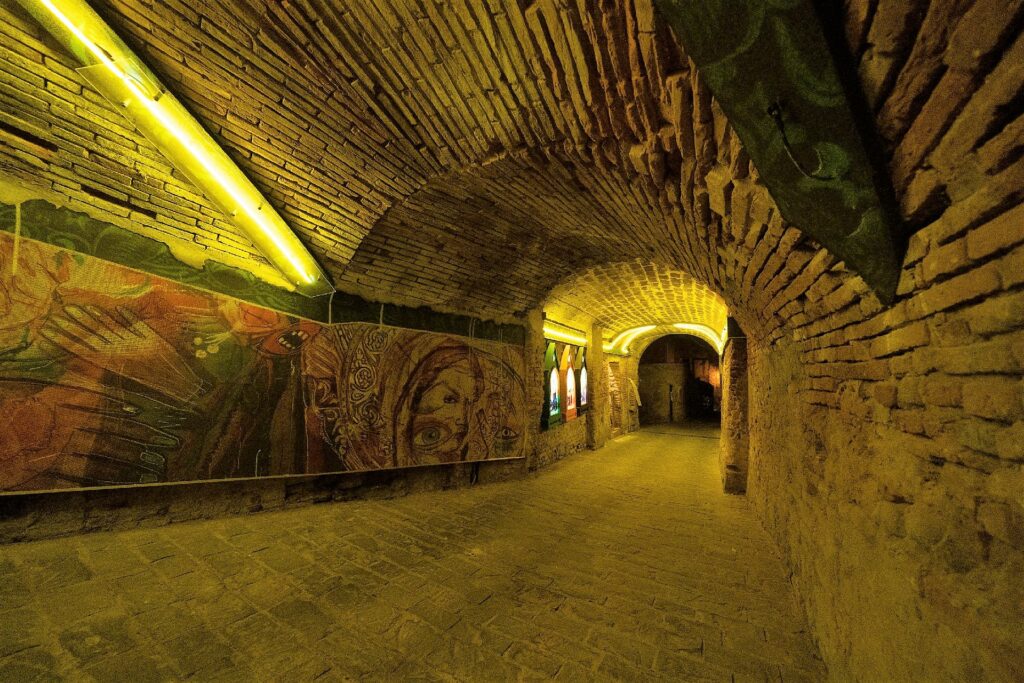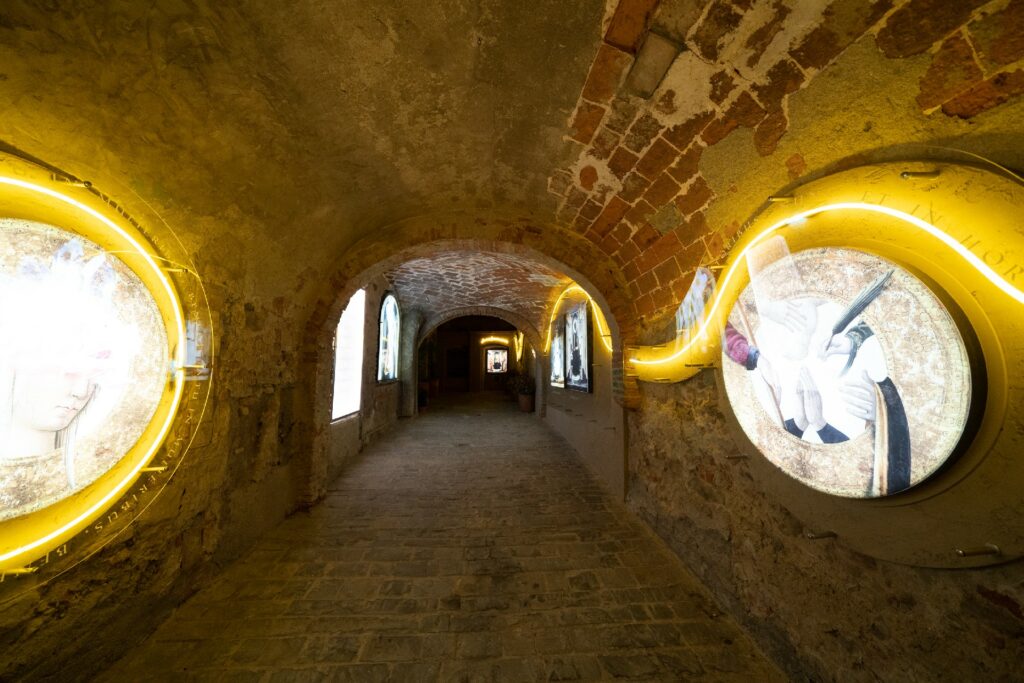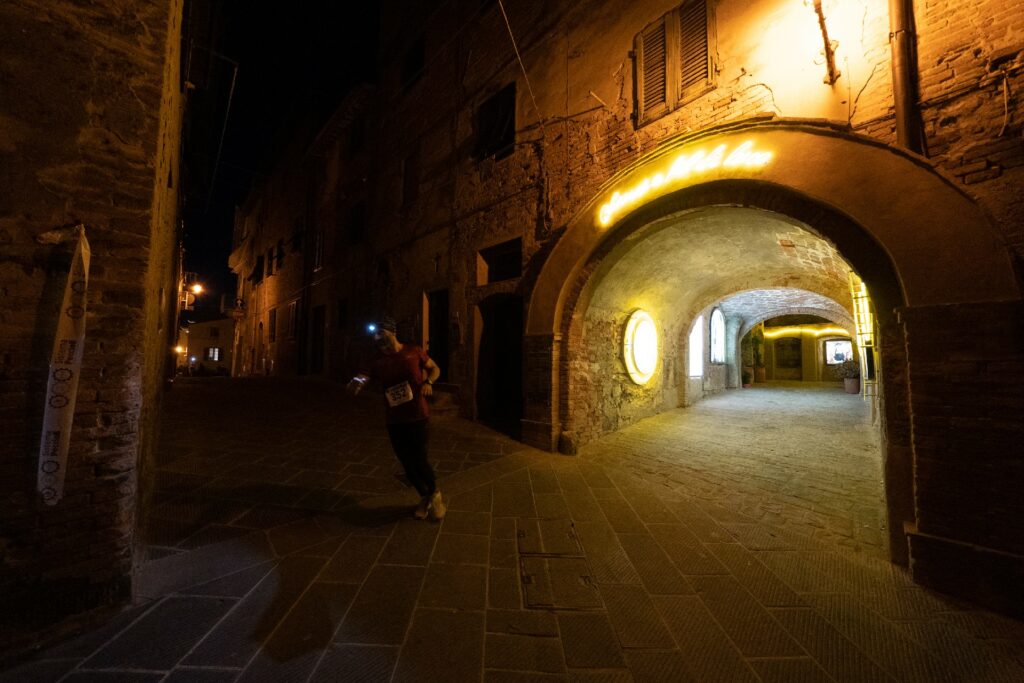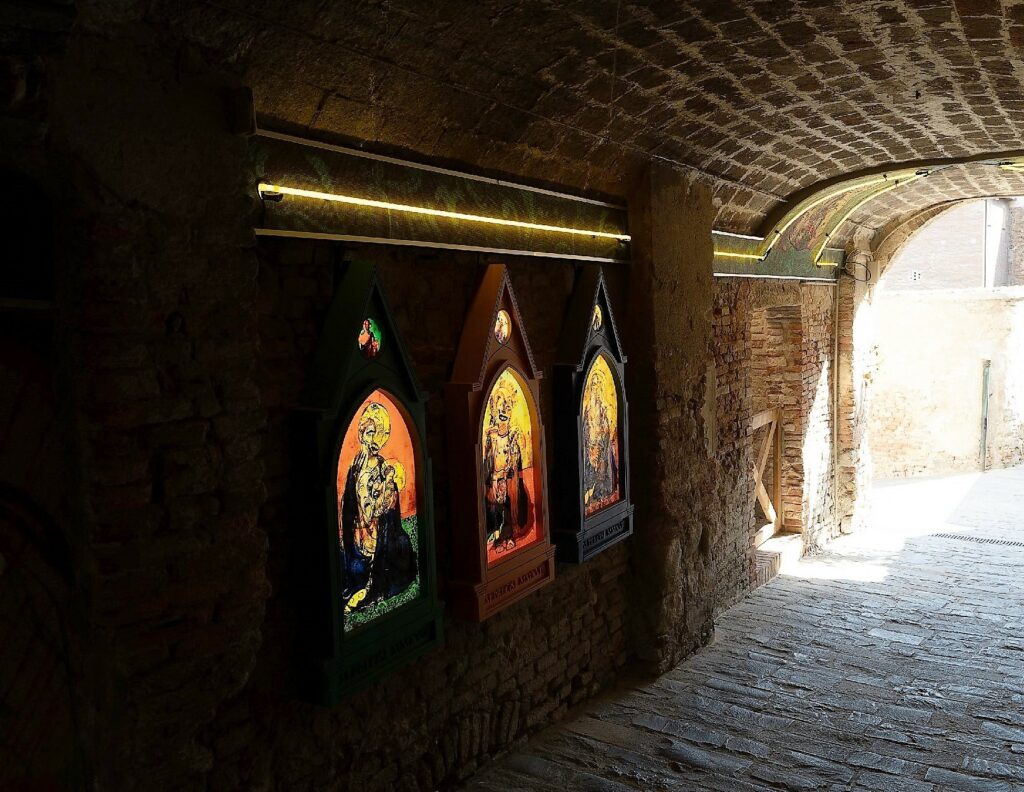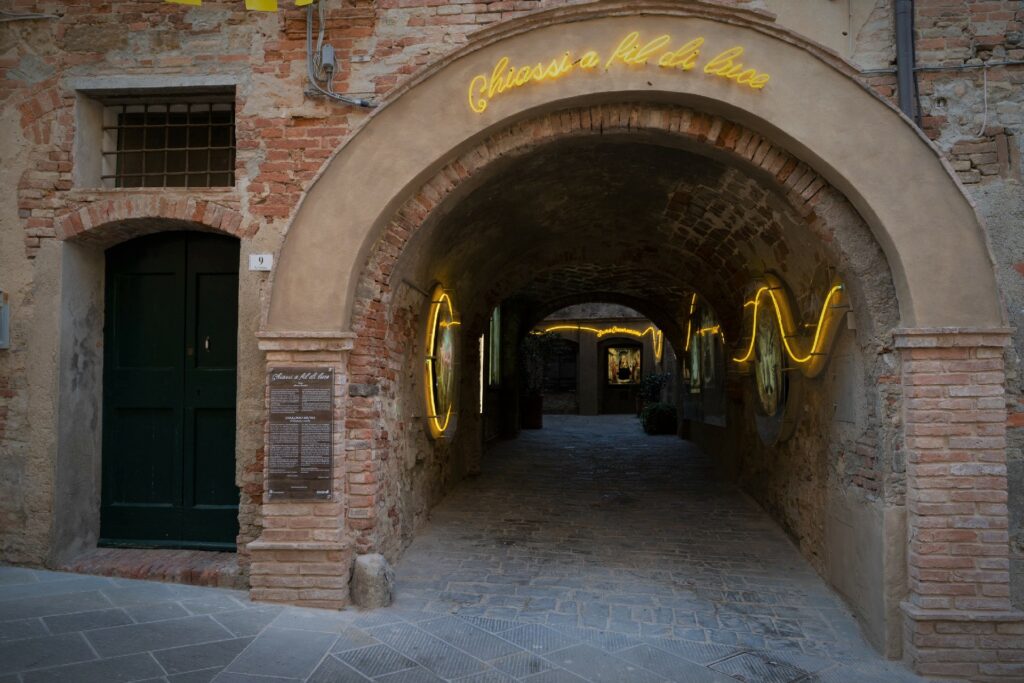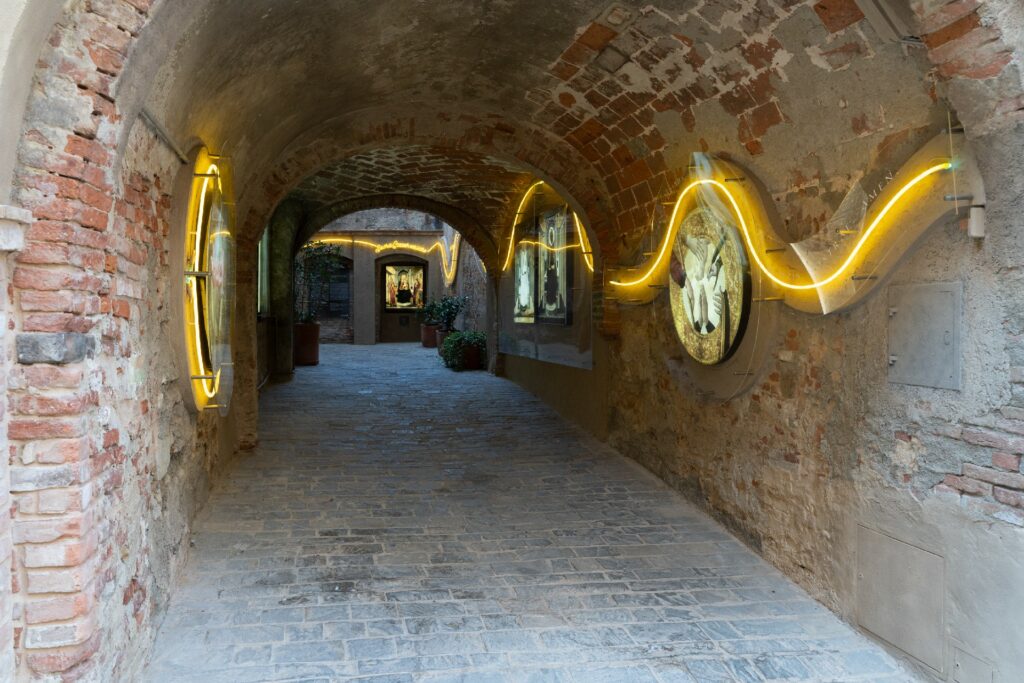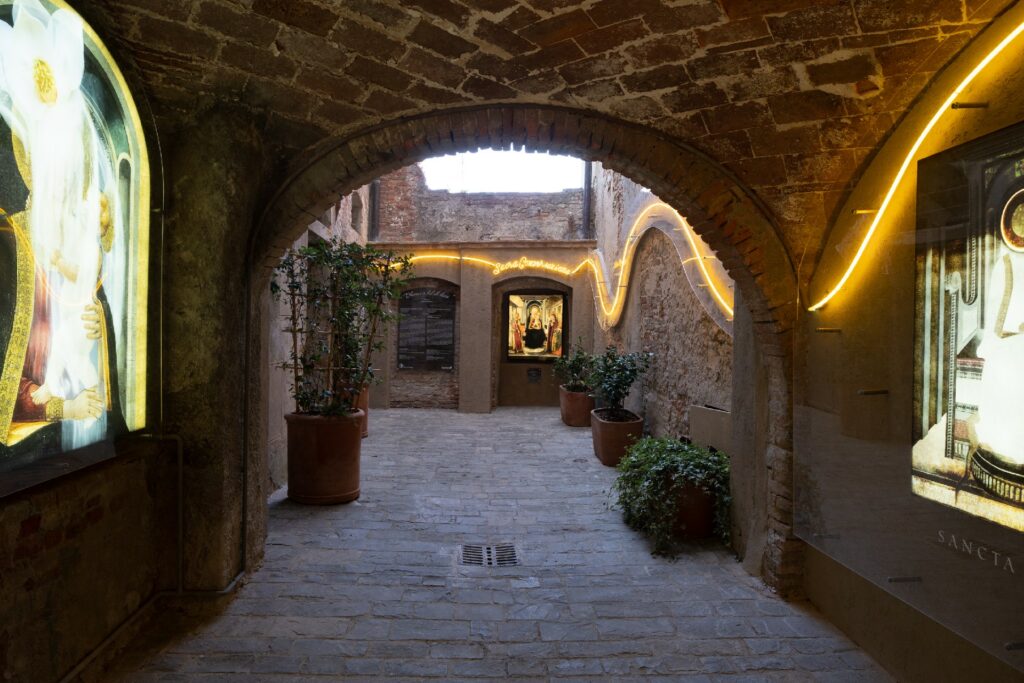The typical little alleys in the village are called “chiassi”. Carrying on the tradition of turning Peccioli into an “open air museum”, the artists Elisabetta Cardella, Massimiliano Precisi and Luca Serasini were invited to revisit some ancient local art works from a contemporary point of view, using “luminous threads” as accessories, which gave the chiassi a new brightness.
The result is a surprising itinerary through some alleys that alternate the charm of medieval buildings with the freshness of light installations and the glimpses of the landscape towards the estate Le Serre.
Elisabetta Cardella, Silent dialogue, 2019 Peccioli
The saints have their lips half-closed in a timeless dialogue. The written word is hidden in the closed books they hold in their hands. The hands, engaged in the typical gestures of argumentation, say something and the eyes respond. An exchange made of poses, attitudes and gestures.
The viewer’s gaze goes towards the face and the loving embrace of the mother who, through a delicate veil of light, protects the child.
Madonna with child and saints, Neri di Bicci, 1463, Painting on panel, 195×170 cm, Chapel of the Assumption, Museum of Sacred Art, Peccioli
The Sacred Conversation is the iconographic formula in which Mary is depicted on the throne with Baby Jesus in her arms, surrounded by saints and scholars, in a calm and serene atmosphere, engaged in a silent conversation made up of gestures and glances on issues concerning the doctrine and theology. A purely spiritual conversation between characters who belong to different eras. Madonna acts as an intermediary between God himself in the guise of the Child and the Man, with his disputes, his problems and his mistakes.
Massimiliano Precisi, The absolution of a black-eyed woman, 2019 Peccioli
Massimiliano Precisi was entrusted with the work “The absolution of a black-eyed woman”. A work that arises from the confrontation with the “Madonna of Humility by Beato Angelico” (known as Madonna di Cedri) attributed to Beato Angelico (around 1425). A tempera painting on panel with gold leaf application, 173 x 72 cm, on display in the National Museum of San Matteo. “Mary, the woman, is born, lives and dies. We imagine her face, her fears and her emotions. When we enter your house, we make a sign with our hands to have your respect; we close our eyes and beg your forgiveness; our hypocrisy makes us blind in front of your eyes; you listen to us and without ever looking at us, you remain silent.
Luca Serasini, The stories of St. Nicholas, 2019 Peccioli
Luca Serasini deals with “The stories of San Nicola”, work taken from “St. Nicholas and the stories of his life”, a panel attributed to Michele di Baldovino (tempera and gold on panel, 3rd quarter of the 13th century), preserved in Peccioli, at Museum of Sacred Art. In the first part of the work, you can see the enlarged and backlit details of the painting that form a new constellation where the stars (discs), in which the main human figures are reproduced, are joined by lines. The second part, “Serpe”, is inspired by the constellation of the Serpent, included in the atlas of the German astronomer Johann Bayer (1572-1625); it is related to the third part of the work, which is intended to be a hypothetical and ironic “stealing” of the painting of the true saint of Peccioli, San Verano, which is present in the Pinacoteca di Brera.
More info: Archive of Foundation Peccioliper
